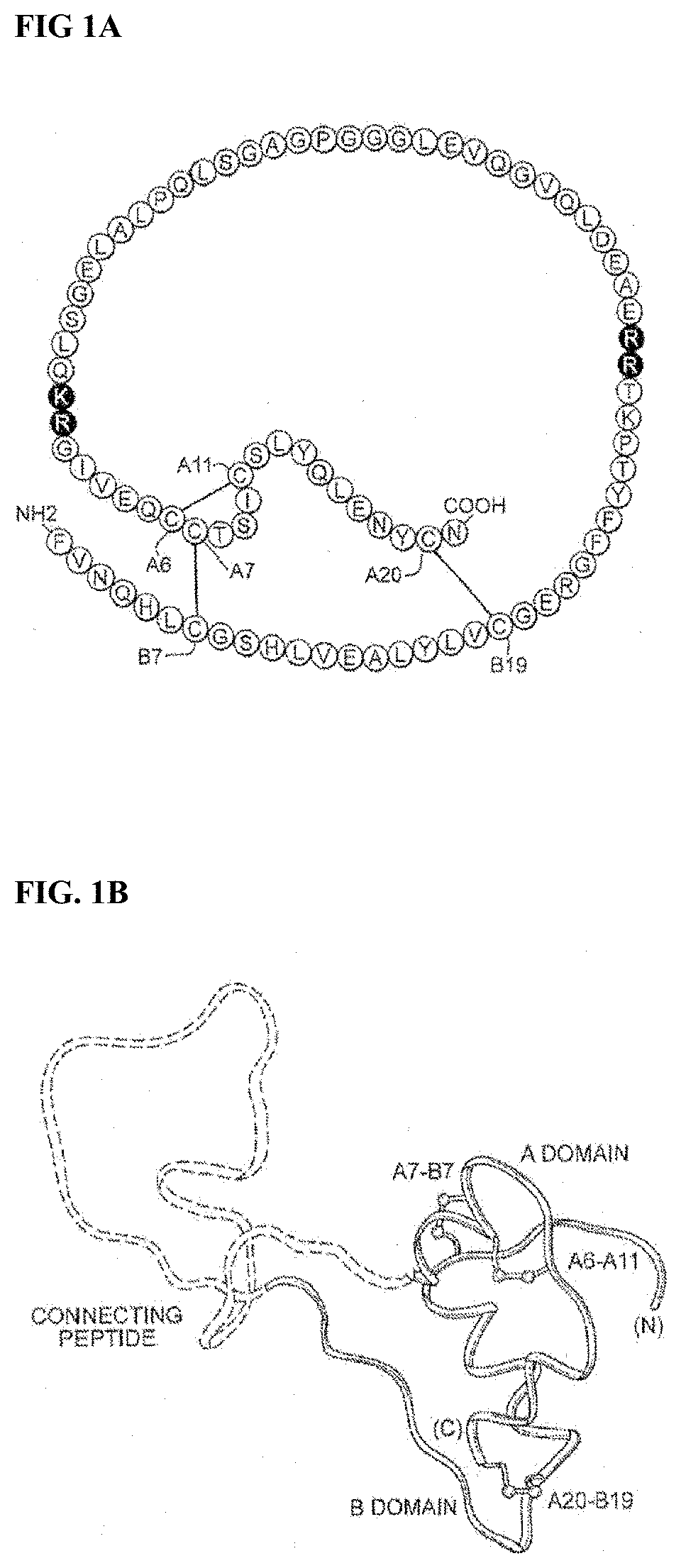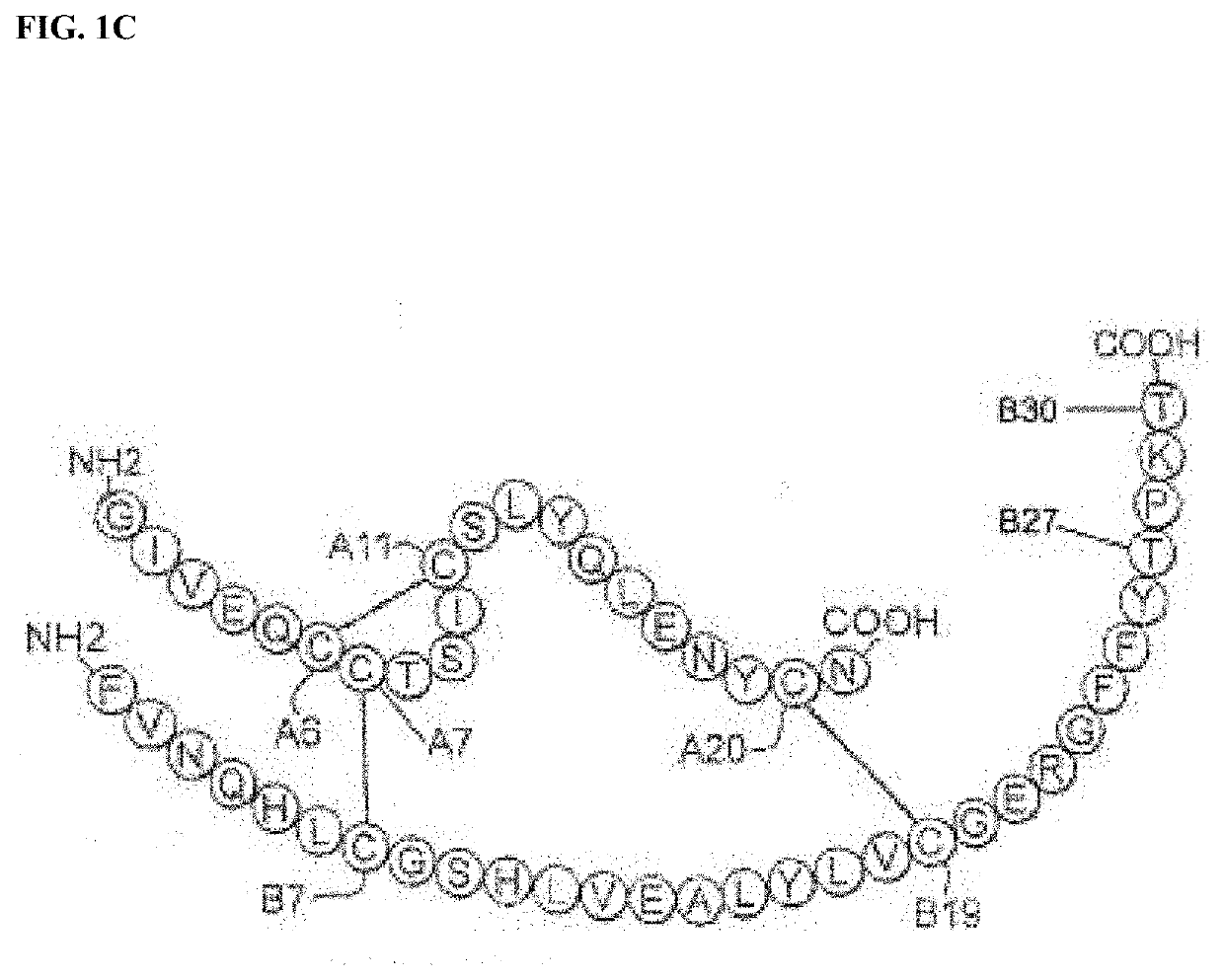Insulin analogues with glucose regulated conformational switch
a conformational switch and insulin analogue technology, applied in the field of glucose-responsive insulin analogues, can solve the problems of increasing or restoring the binding affinity of the insulin analogue to its receptor, disrupting the interaction between the glucose-binding moiety and the binding partner moiety, etc., and achieve the effect of reducing the binding affinity of the insulin analogu
- Summary
- Abstract
- Description
- Claims
- Application Information
AI Technical Summary
Benefits of technology
Problems solved by technology
Method used
Image
Examples
example 1
of Methyl (S)-2,3-diaminopropanoate
[0083]Methanol (50 mL) and (S)-2,3-diaminopropanoic acid (2.0 g, 19.2 mmol) were added to a 100 mL round bottom flask equipped with a condenser and a magnetic stirring bar. This solution was vigorously stirred at room temperature and 1 mL of sulfuric acid was added to this solution.
[0084]The solution was heated to 90° C. and allowed to reflux for 18 hours. Methanol was removed in vacuo and the solids obtained after the removal of methanol were dissolved with ethyl acetate and washed with water. The organic layer obtained after washing was dried over sodium sulfate. Subsequently, ethyl acetate was removed in vacuo to obtain the product as a yellow oil. The yield obtained from the synthesis was 2.1 g (i.e., 91%). The reaction scheme is shown below:
example 2
of mDA-Z4 (methyl (S)-2,3-bis(1-hydroxy-1,3-dihydrobenzo[c][1,2]oxaborole-6-carboxamido)propanoate)
[0085]N,N′-dimethylformamide (10 mL) was added along with 150 mg of methyl (S)-2,3-diaminopropanoate (1.26 mmol) to a 100 mL round bottom flask containing a magnetic stir-bar. 1-hydroxy-1,3-dihydrobenzo[c][1,2]oxaborole-6-carboxylic acid (1.36 g, 7.8 mmol) was added to the round bottom flask followed by 1-ethy-3-(3-dimethylaminopropyl)carbodiimide (440 mg, 2.65 mmol) and 4-dimethylaminopyridine (324 mg, 2.65 mmol).
[0086]This solution was stirred overnight, the solvent was removed in vacuo, and the solids obtained after the removal of the solvent were dissolved in ethyl acetate. The organic layer was extracted twice with water and, subsequently, the organic layer was removed to reveal a yellow oil (298 mg, 0.776 mmol, 54% yield). The reaction scheme is shown below:
example 3
of DA-Z4 (S)-2,3-bis(1-hydroxy-1,3-dihydrobenzo[c][1,2]oxaborole-6-carboxamido)propanoic acid
[0087]Potassium hydroxide (25%, v / v) was added to mD-Z4 (298 mg, 0.776 mmol) in a 100 mL round bottom flask containing a stir bar. This solution was allowed to stir at room temperature for one hour. The flask was then submerged in an ice bath and concentrated hydrochloric acid was added. Upon adjustment to a pH<1 a white precipitate formed. This white precipitate was isolated via filtration to yield 263 mg of D-Z5 (MS: [MH+]=437.3). The reaction scheme is shown below:
PUM
| Property | Measurement | Unit |
|---|---|---|
| concentrations | aaaaa | aaaaa |
| concentrations | aaaaa | aaaaa |
| v/v | aaaaa | aaaaa |
Abstract
Description
Claims
Application Information
 Login to View More
Login to View More - R&D
- Intellectual Property
- Life Sciences
- Materials
- Tech Scout
- Unparalleled Data Quality
- Higher Quality Content
- 60% Fewer Hallucinations
Browse by: Latest US Patents, China's latest patents, Technical Efficacy Thesaurus, Application Domain, Technology Topic, Popular Technical Reports.
© 2025 PatSnap. All rights reserved.Legal|Privacy policy|Modern Slavery Act Transparency Statement|Sitemap|About US| Contact US: help@patsnap.com



